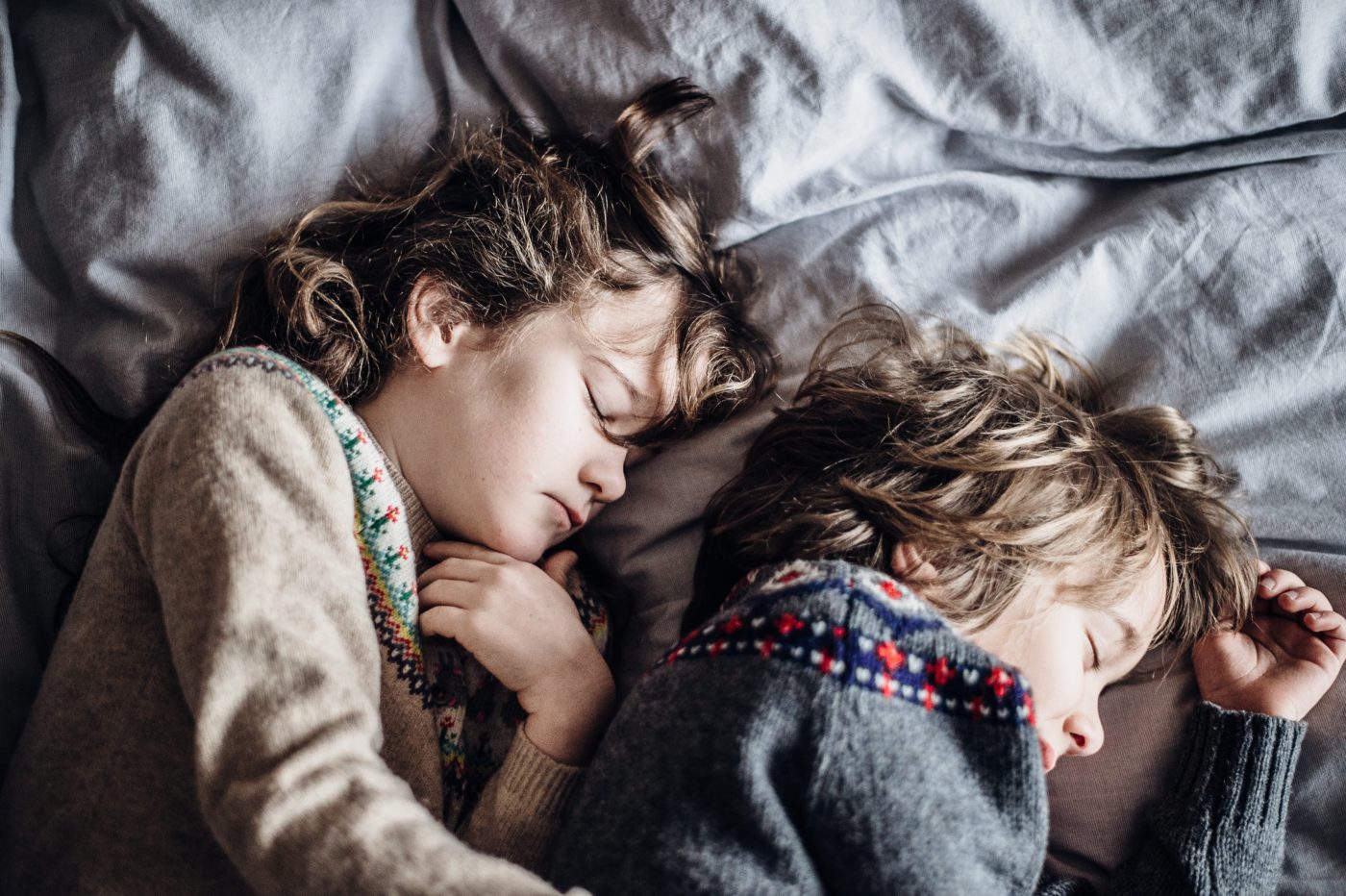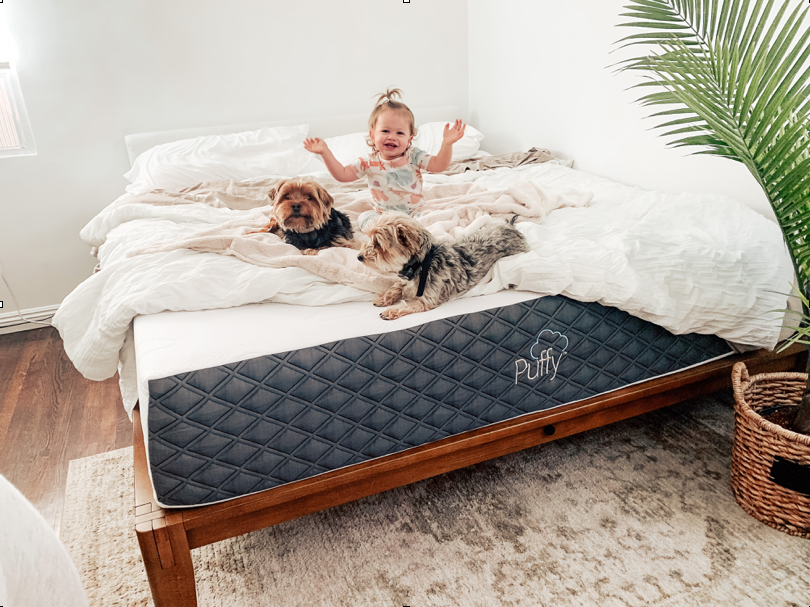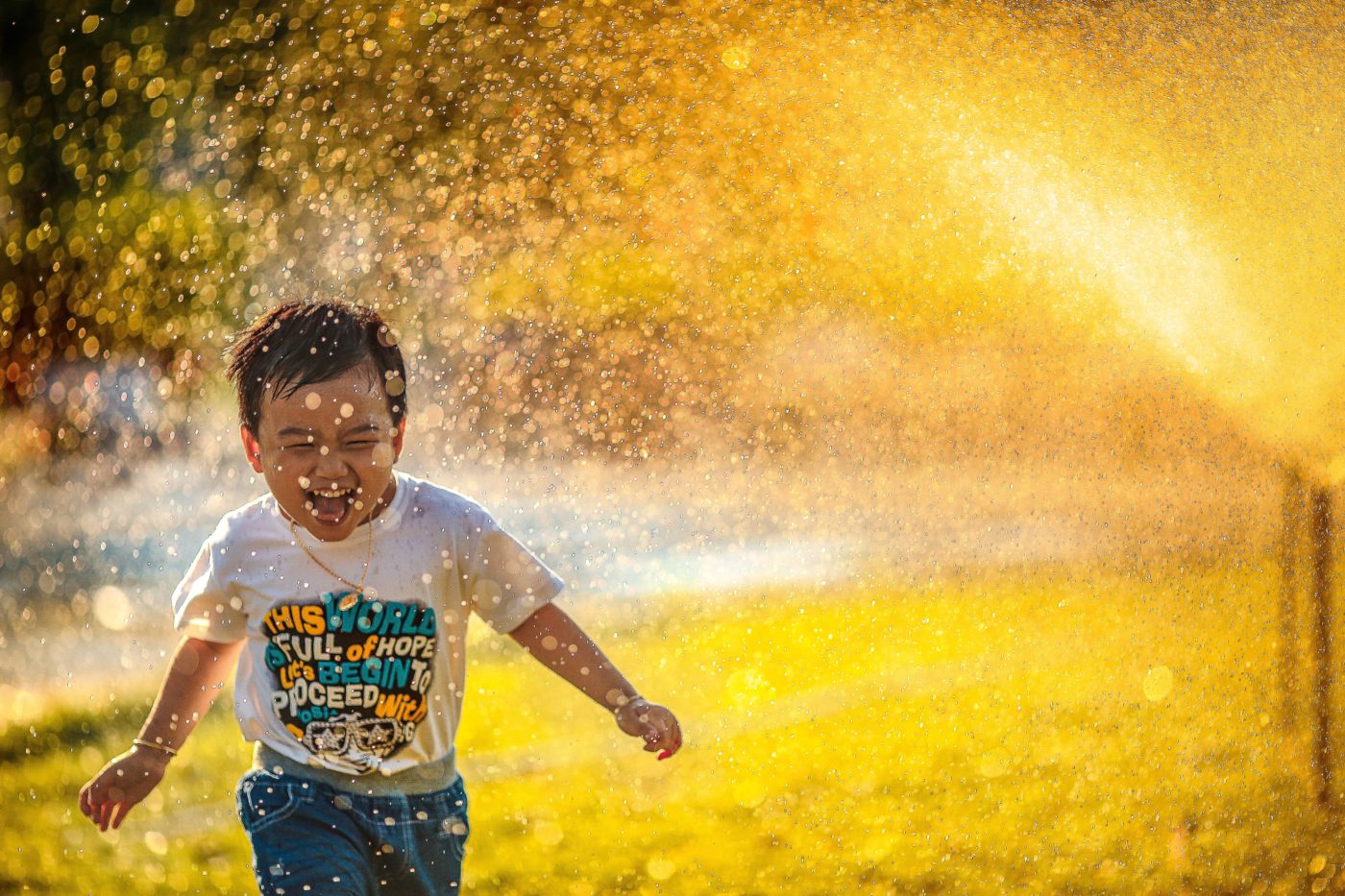Advertisement feature in association with Puffy mattresses
I’ve had the full spectrum when it comes to kids and sleep. Bee was sleeping in a cot, 12 hours a night, from six weeks old. Belle, on the other hand, was not. She woke many MANY times a night for years, slept in my bed until she was two and a half and only finally slept through the night when she started school, aged four.
Lack of sleep was a permanent feature of my twenties.
Falling asleep continued to be an issue for her throughout childhood, and I’ve spent many an evening sitting on the floor next to her bed in the dark, Googling things like ‘how to sleep better’ and ‘foods that help you sleep’, desperate to find the one sleep hack that would make the difference.

Unfortunately, when it comes to how to fall asleep there isn’t normally one miracle cure, especially with kids. While small things like essential oils for sleep and calming sleep music can play a part, sleep is a much bigger picture and you need to think about everything from how much exercise your child is getting during the day to choosing the best mattress and bedding.
Here are four things to consider when it comes to helping your child sleep better.
Bedtime reading
A consistent, relaxing bedtime routine is really important for children and reading at bedtime is a key part of this. Not only do bedtime stories help children to relax and to bond with you over a shared experience, but there has also been lots of research into the educational benefits – reading at bedtime helps to develop motor skills through page-turning and can improve memory. It has also been shown to help emotional and social development.
Choose the best mattress
When thinking about how to help your child fall asleep, don’t forget to think about their physical environment, including their bedding and mattress. Opt for bedding made from natural fibres for breathability and comfort and spend some time researching the top-rated mattresses for children both in terms of size and feel. Children are notoriously wiggly in their sleep so the most comfortable mattress will be one with plenty of room for movement.
A memory foam mattress can help to support them and make sleep more comfortable, meaning they may fall asleep more quickly and may be less likely to wake at night.

Keep the bedroom cool
Although the temptation is to create a warm and cosy environment to help your child sleep well, it’s actually much better to have your bedroom slightly cooler. Your body temperature peaks in the evening but then dips while you sleep, so having your bedroom slightly cooler than the rest of the house helps your body to gently reduce its temperature ready for sleep.
The Sleep Council recommends 16-18°C (60-65°F) as the ideal bedroom temperature. You could also consider a cooling mattress to prevent overheating during the night.
Weighted blankets
Weighted blankets are becoming increasingly popular as a way to help you sleep better and reduce anxiety. If you’re wondering ‘what is a weighted blanket’, well, it’s just what it says it is – a blanket with extra weight sewn into in, normally in the form of small beads or pellets of some kind, that create an extra feeling of safety and security when you’re trying to get to sleep.
I actually made Belle a weighted blanket a year or so ago and it has definitely helped her sleep although it was a bit of a labour of love! Unless you are very patient and have a lot of time on your hands I’d probably recommend buying one.
Hopefully with these tips as part of a relaxing and consistent bedtime routine you’ll find your kids sleep well and wake up ready for a new day of adventures every day!

